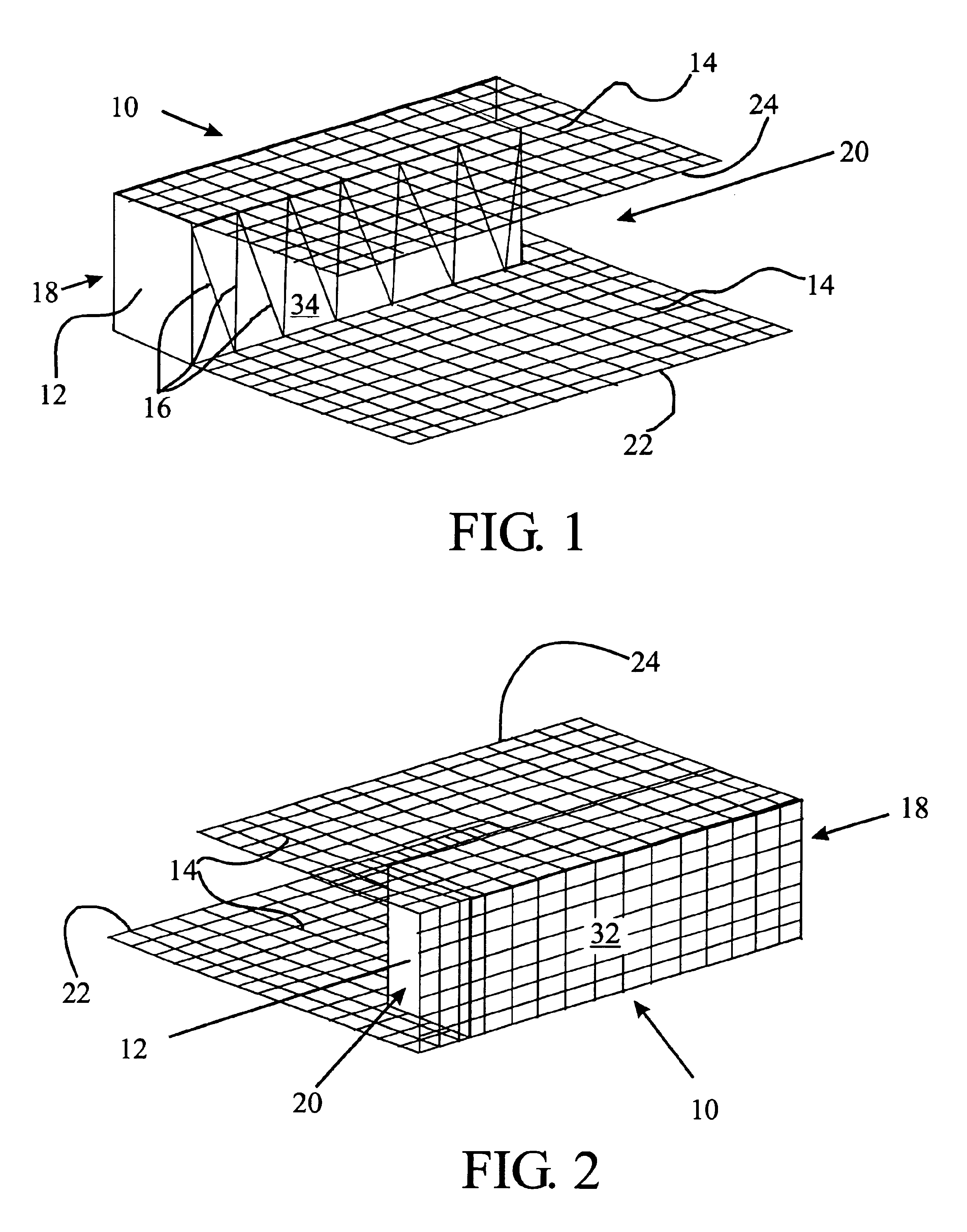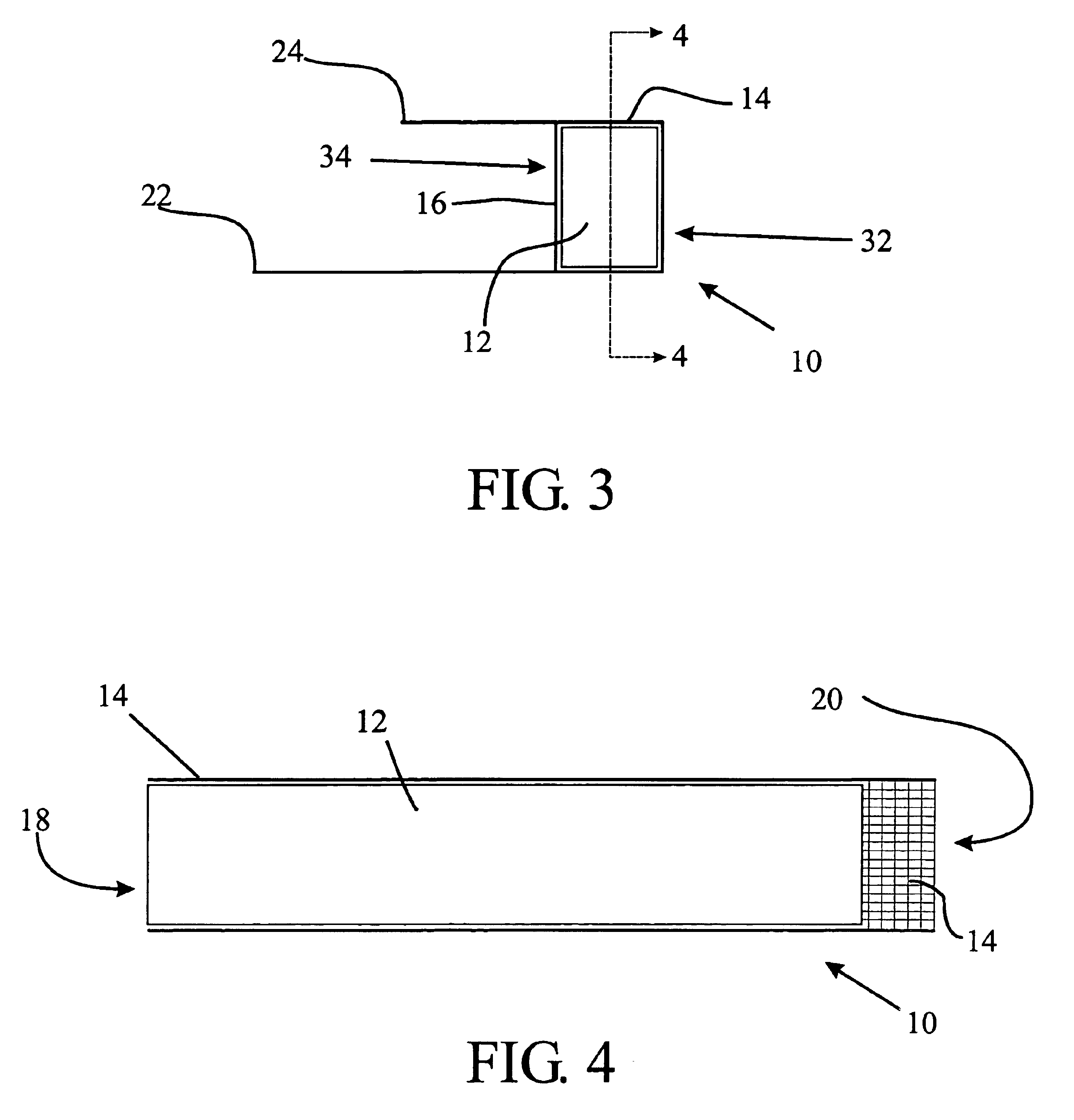Self-anchoring fiber block system
a fiber block and fiber block technology, applied in artificial islands, construction, marine site engineering, etc., can solve the problems of increasing the danger of flash flooding, and increasing the pollution level of unfiltered runoff, so as to prevent soil erosion, facilitate installation, and promote vegetation growth
- Summary
- Abstract
- Description
- Claims
- Application Information
AI Technical Summary
Benefits of technology
Problems solved by technology
Method used
Image
Examples
Embodiment Construction
[0036]This application refers in detail below to the exemplary embodiments of a self-anchoring fiber block segment 10 according to the invention, which are illustrated in the accompanying drawings. The fiber block segment 10 can be used as a component of a fiber block system 40 to stabilize a shoreline or waterway bank by providing support for and preventing erosion of the soil behind the fiber block system 40 (on the other side of the fiber block system 40 from the side exposed to water). Wherever possible, the application uses the same reference numbers throughout the drawings to refer to the same or similar items.
[0037]FIGS. 1-11 illustrate a first embodiment of a fiber block segment 10 of the self-anchoring fiber block system of the invention. As shown in FIGS. 1 and 2, fiber block segment 10 includes a compressed coir fiber block 12 and a high strength coir fabric 14 wrapped around three sides of the compressed coir fiber block 12. The coir fiber block 12 may also be wrapped wi...
PUM
 Login to View More
Login to View More Abstract
Description
Claims
Application Information
 Login to View More
Login to View More - R&D
- Intellectual Property
- Life Sciences
- Materials
- Tech Scout
- Unparalleled Data Quality
- Higher Quality Content
- 60% Fewer Hallucinations
Browse by: Latest US Patents, China's latest patents, Technical Efficacy Thesaurus, Application Domain, Technology Topic, Popular Technical Reports.
© 2025 PatSnap. All rights reserved.Legal|Privacy policy|Modern Slavery Act Transparency Statement|Sitemap|About US| Contact US: help@patsnap.com



